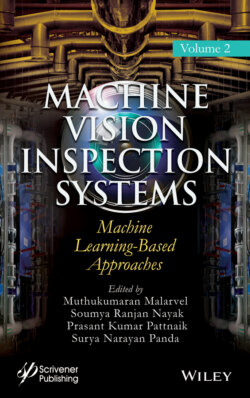Читать книгу Machine Vision Inspection Systems, Machine Learning-Based Approaches - Группа авторов - Страница 33
2.4.3 MNIST Classification
ОглавлениеThe Omniglot dataset has more than 1,600-character classes, but has only 20 samples for each category. In contrast, MNIST dataset has 10 classes and 60,000 total training samples [30]. Since the proposed model of this study aims to learn an abstract knowledge about characters and extend it to identify new characters, by treating MNIST as a whole new alphabet with 10 characters, we could use the proposed capsule layers-based Siamese network model to apply classifications for MNIST dataset. Table 2.4 shows the accuracy values obtained by different MNIST models. Here, large neural networks have achieved more than 90% accuracy while the proposed capsule layers-based Siamese network model has given 76% accuracy with only 20 images.
Figure 2.6 Gurmukhi (left) and Cyrillic (right) alphabets.
Table 2.4 Accuracies of different MNIST models.
| MNIST Model | Accuracy |
| 1-Layer NN [18] | 88% |
| 2-layer NN [18] | 95.3% |
| Large convolutional NN [25] | 99.5% |
| Proposed capsule layer-based Siamese network (1-shot) | 51% |
| Proposed capsule layer-based Siamese network (20-shot) | 74.5% |
The MNIST dataset is a benchmark model for image classification algorithms and has been solved to get more than 90% accuracy as summarized in Table 2.4. These methods are based on deep neural networks and use all the 60K characters in the dataset.
Although the proposed capsule layers-based Siamese network model has shown only 51% accuracy with MNIST dataset, that has used only one sample for each digit class while other models have access to more than 60,000 samples. The proposed solution has improved this accuracy by using the same n-shot learning technique. By using 20 samples the accuracy is improved by 23.5% as depicted in Figure 2.7. Thus, the classification accuracy of MNIST dataset is improved from 51 to 74.5% by using a greater number of samples.
Figure 2.7 MNIST n-shot learning performance.
